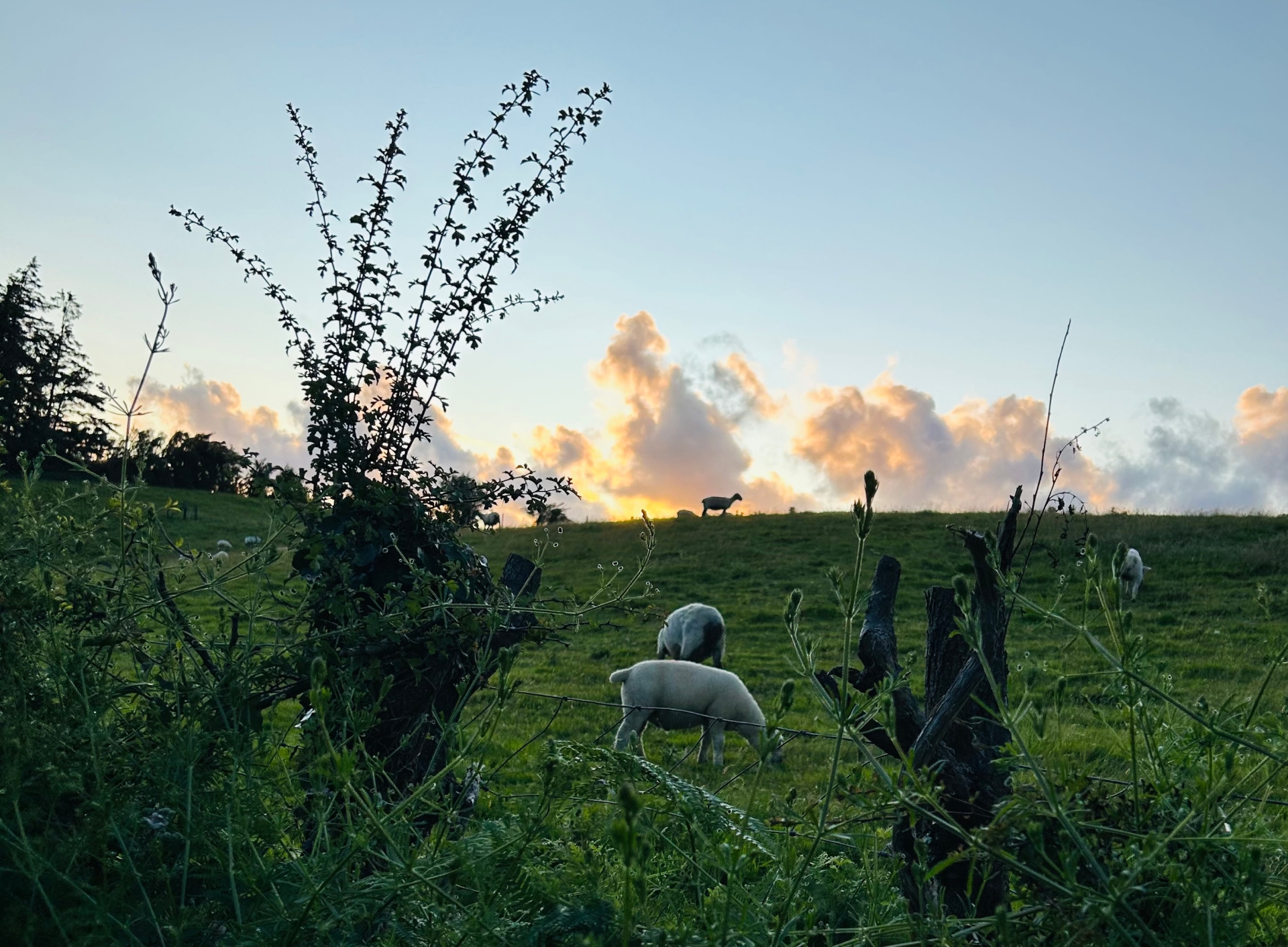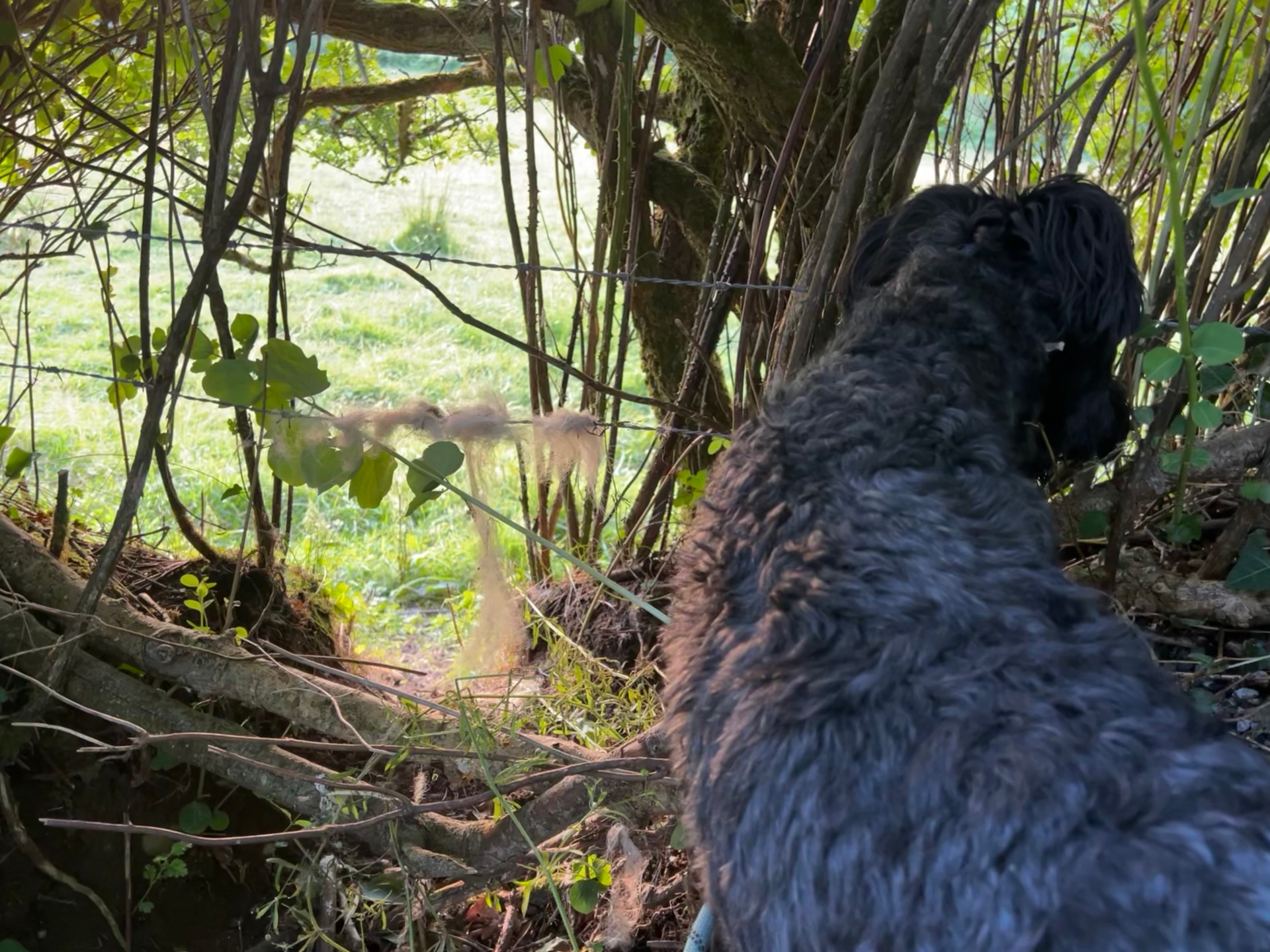
Michael Higgins and Seán Mooney spoke to The Mayo News at Ballinrobe Mart
Wool is a super fibre, it reacts to changes in body temperature. It will keep you warm in the cold and cool in the heat.
It's very adaptable, plentiful and in time of increased moves towards a circular economy, it’s sustainable. In Mayo alone, over 850,000 kilos are produced each year.
READ MORE: Young Mayo farmer to represent county at sheep farmer forum
Mayo is in many ways the heartland of Irish sheep farming and is home to over 433,972 sheep and boasts the highest number of mountain sheep in the country.
So why is there no market for it, so much so that it costs more to shear a sheep than the wool is worth?
The warm and engaging Michael Higgins from Killawalla spells out the economic reality for farmers, it costs him €200 to shear his sheep and the wool will sell for €30. Leaving him to deal with a deficit of €170.
“It’s ridiculous as wool can be used for so many things,” he says, when speaking to The Mayo News at Ballinrobe mart.
For previous generations of sheep farmers, wool was the “payday, the only show in town”, now “unfortunately, wool is just a by-product”, wool merchant Pat Coffey laments.
 New guidelines for farmers on wool care and presentation have been sent to all sheep farmers by the Irish Grown Wool Council
New guidelines for farmers on wool care and presentation have been sent to all sheep farmers by the Irish Grown Wool Council
The fourth generation wool merchant can think back to his grandfather’s time when people would have worn wooly socks, wool clothing and would have had a good wool suit.
Michael Higgins recalls years back hearing older farmers talking about building stores for wool as it was so valuable and you could get thousands back at the end of the year.
READ MORE: 'We'll make you proud' - Moving funeral tribute for beloved Mayo teacher
The introduction of synthetic fabric into the clothing industry alongside the consumer preference for softer wools, such as merino wool, have meant the demand for Irish wool is no longer coming from the textile industry.
Irish wool is “a harder wool, and it's more suited for carpets and wall panels”, Dave Heraty explains between shearing sheep in Louisburgh.
Demand fallen
Demand for carpets domestically has fallen as most new houses are opting for timber or tile floors.
Internationally, the demand for carpets containing Irish wool is coming from cruise ships, airplanes, conference centres and hotels.
The price demanded by Irish wool “went off a cliff” in 2014 and has been on the slide since.
READ MORE: British TV star set for Mayo bookstore appearance
It is now very much second fiddle to meat production. Last year saw a record 17.4 percent increase in the price for lamb. This continued a four year trend of increasing prices.
This has led to an understandable prioritisation of breeding for lamb over wool. The quality of wool has changed and is often darker than in previous years. The grey tinge is harder to dye and less adaptable than white wool and so is also worth less.
“Wool is a highly commoditised product and the decline in the selling price of raw wool over recent decades means that wool value is minimal as percentage of typical income from the sale of related lamb meat,” the 2022 Review Of Market Opportunities For Irish-Grown Wool Based Products notes.
Demographics is another factor, with older farmers cutting back on numbers. This can be seen with the shrinking of the national herd from a high of over four million in 2021 to the current number of over three and a half million.
Achill-native Sean Mooney is bucking the trend as a young sheep farmer, “it’s more of a hobby than anything else. Sheep farming is hard enough to make a living.
“Wool is worth absolutely nothing. I’m lucky my brother can shear the sheep for me.”
 Wool caught on a wire fence
Wool caught on a wire fence
Tide turning?
Is the tide turning? Could houses made of wool be the future?
Coffey tells The Mayo News that there was “great optimism at the start of the season. There was real interest coming from the Chinese market. And then unfortunately, this American administration came in, and these tariffs kind of knocked everything under the head a little bit.
“China buys more wool than the rest of the world put together. So if they're in the market and they're buying wool, the price goes up across the world. The global uncertainty, at the moment, means people don't want to commit to filling warehouses with a fibre that they're not sure where they're going to be able to sell.”
Innovations in the building sector could prove a game changer.
JJ O’Hara, the CEO of Future Cast, is currently in the process of seeking certification to use mountain wool in concrete mix. This compound would be used in 3D printing of houses.
If approved, the use of wool in the building trade could provide a big answer to where the seven million kilos of Irish wool produced each year goes.
JJ, who has a facility in Ballaghdreen, says the next question would be 'the chicken and egg dilemma' of when/if Ireland will get its own scouring facility.
Carrowkennedy-based shearer David Heraty would love to see the Irish government using Irish wool or retrofit state-owned buildings. He believes the government created the market for Irish wool to be used in insulation and carpets and these innovations could not only add to the circular economy. Potentially, it could also provide demand for a product the market doesn’t seem to want.
New guidelines
In the meantime, new guidelines for farmers on wool care and presentation have been sent to all sheep farmers by the Irish Grown Wool Council.
Both Pat and Dave are members of the Irish Grown Wool Council’s wool care and presentation subgroup which drew up the first guidelines in this area for more than 20 years.
It is hoped that these new guidelines will improve the quality of the wool and therefore increase the price for Mayo sheep farmers.
The Irish Grown Wool Council is an independent, industry-led group that aims to develop the Irish wool brand domestically and internationally and to encourage collaboration and innovation among stakeholders.
As part of this brand, it is looking at the potential introduction of an Irish wool mark, which would place a requirement on producers to use a certain amount of Irish wool in that product in order to claim it is Irish wool.
Subscribe or register today to discover more from DonegalLive.ie
Buy the e-paper of the Donegal Democrat, Donegal People's Press, Donegal Post and Inish Times here for instant access to Donegal's premier news titles.
Keep up with the latest news from Donegal with our daily newsletter featuring the most important stories of the day delivered to your inbox every evening at 5pm.